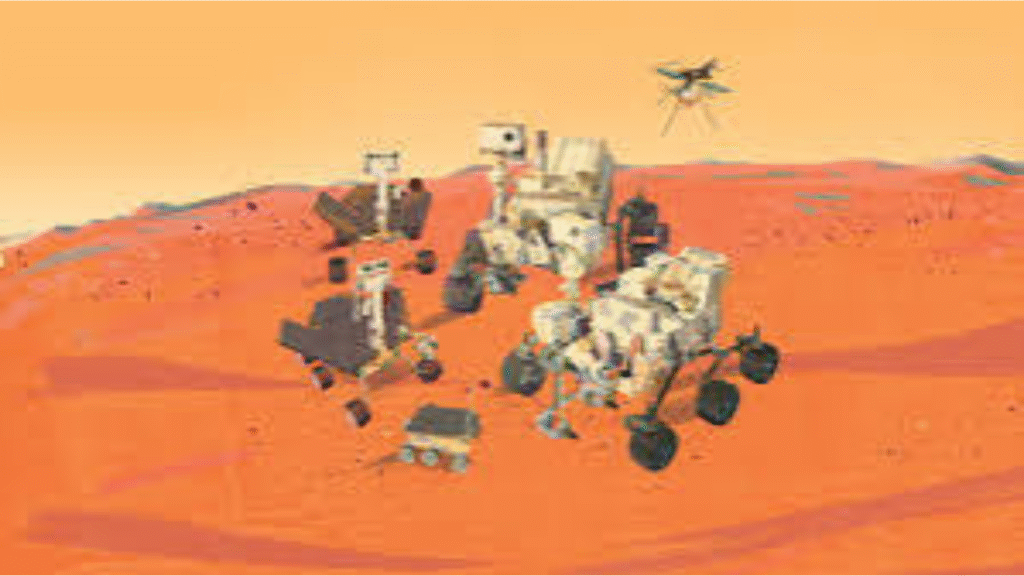Discover how NASA’s Perseverance rover spotted a turtle-shaped rock on Mars. Explore quiz questions, answers, and key facts about the Red Planet, its missions, and groundbreaking discoveries.

Q1. On which planet is NASA’s Perseverance rover conducting research?
a) Jupiter
b) Mars
c) Venus
d) Saturn
🐢 Answer ~ Mars.
Q2. What shape of rock did Perseverance rover discover on Mars, nicknamed the ‘turtle’?
a) Snake-like
b) Turtle-like
c) Elephant-like
d) Lion-like
🐢 Answer ~ Turtle-like.
Q3. In which year did Perseverance rover land on Mars?
a) 2018
b) 2019
c) 2020
d) 2021
🐢 Answer ~ 2021.
Q4. Who named the turtle-like rock found on Mars?
a) NASA scientists
b) Indian Space Agency
c) European Space Agency
d) Russian scientists
🐢 Answer ~ NASA scientists.
Q5. What is the main mission of Perseverance rover?
a) To search for signs of life on Mars
b) To grow plants on Mars
c) To send humans to Mars
d) To bring water to Mars
🐢 Answer ~ To search for signs of life on Mars.
Q6. In which region was the turtle-like rock discovered?
a) Jezero Crater
b) Sahara Region
c) Himalayan Region
d) Arabian Sea Basin
🐢 Answer ~ Jezero Crater.
Q7. By what name is Mars commonly known?
a) Blue Planet
b) Green Planet
c) Red Planet
d) Yellow Planet
🐢 Answer ~ Red Planet.
Q8. Perseverance rover is a part of which mission?
a) Artemis Mission
b) Mars 2020 Mission
c) Apollo Mission
d) Voyager Mission
🐢 Answer ~ Mars 2020 Mission.
Q9. Which small helicopter was sent along with Perseverance rover to Mars?
a) Discovery
b) Ingenuity
c) Curiosity
d) Explorer
🐢 Answer ~ Ingenuity.
Q10. Why is studying the ‘turtle-like rock’ on Mars important?
a) To find animals on Mars
b) To understand Mars’ surface and geological history
c) To build cities on Mars
d) To bring water from Mars
🐢 Answer ~To understand Mars’ surface and geological history.
📚 Read these also ~
- The Voice season 28 premieres with new coach Michael Buble!
- The Mandalorian and Grogu release date!
- Jimmy Kimmel Live!” returns after suspension!
- The Mandalorian and Grogu movie trailer released!
- Harry Potter actress Jessie Cave banned from convention for OnlyFans!
Conclusion – The discovery of a turtle-shaped rock is more than just a curiosity it provides valuable clues about the planet’s geological history.